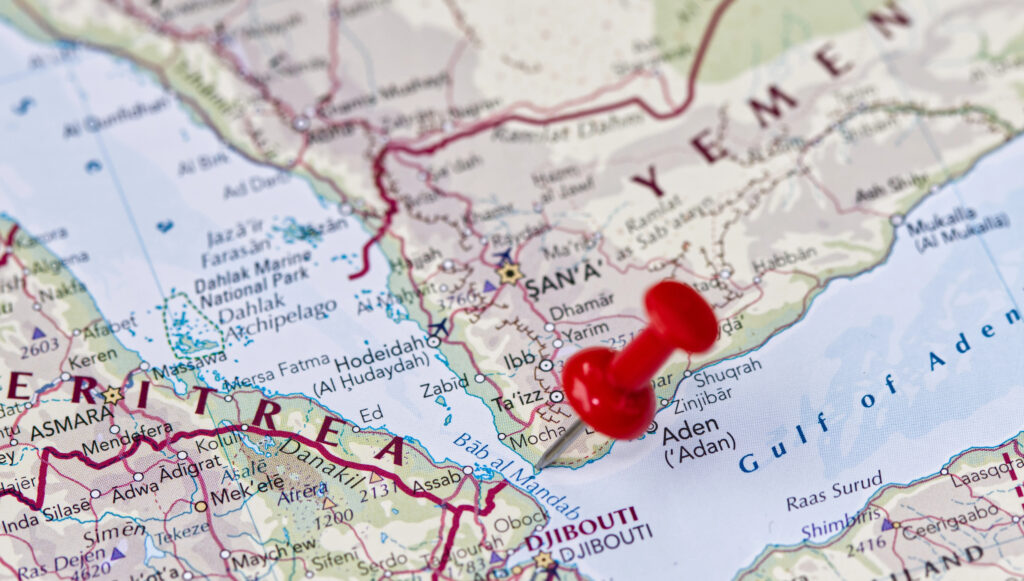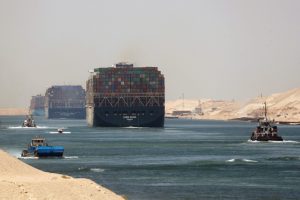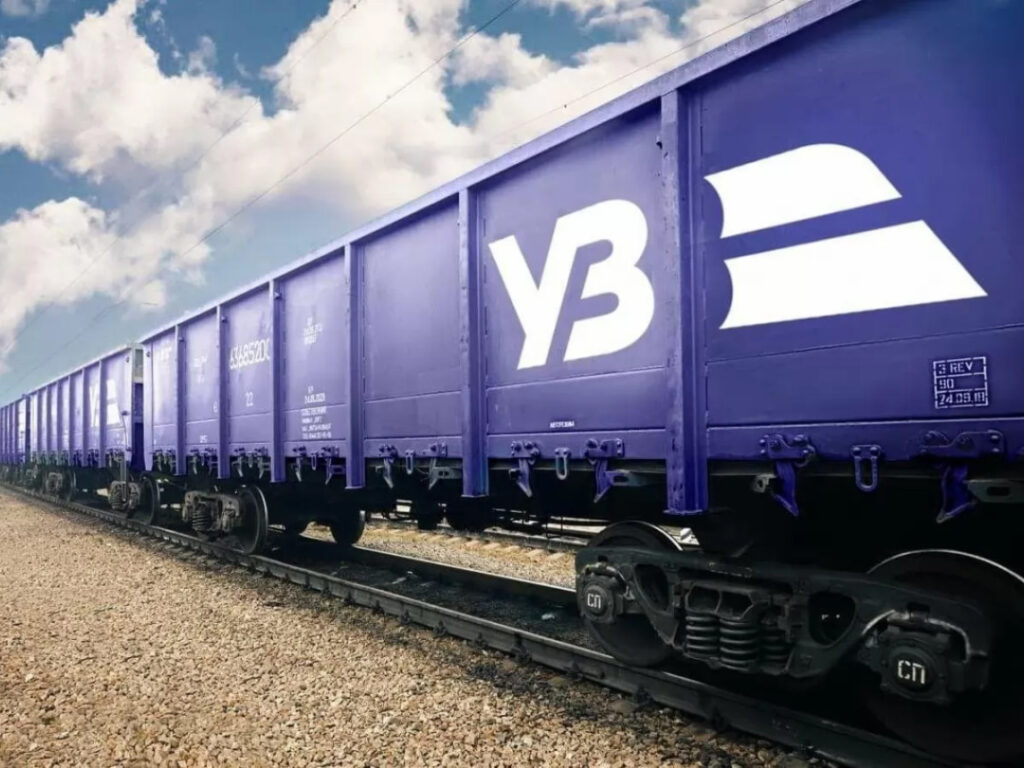Shipping under threat: The Red Sea crisis is changing maritime transport

The crisis in the Red Sea has been going on for more than three months. Regular attacks on ships by the Houthis cause serious alarm in the world community, as it is not only about international security, but also about challenges for the transport and logistics industry. At the same time, the crisis also affected agricultural exports from Ukraine.
The management of the Global Ocean Link company, CEO Pavlo Linnyk and Commercial Director Volodymyr Guz, shared with USM their vision of this problem and prospects for the development of the situation.
Briefly about essential points
Attacks by the Yemeni Houthis on merchant ships in the Red Sea have been ongoing since October 2023. Since then, they have carried out more than 27 attacks against civilian vessels using combat drones and ballistic missiles.
In November, the Houthis seized the Galaxy Leader cargo ship and took hostages, including Ukrainian sailors. After that, they also tried to seize the tanker Central Park in the Gulf of Aden, when the vessel was rescued by the US destroyer USS Mason.
In turn, in December, the United States and nine other countries announced the launch of Operation Prosperity Guardian. The purpose of the operation is to solve security problems in the southern part of the Red Sea and the Gulf of Aden to ensure freedom of navigation for all countries. The coalition currently has more than 20 members, including Great Britain, Norway, France, the Netherlands, Italy, Denmark, India, Bahrain and the Seychelles.
Thus, on January 12, the United States and Great Britain, with the support of Australia, Bahrain, Canada and the Netherlands, launched a series of air and missile strikes against the Houthis in Yemen in response to the latter’s attacks on ships in the Red Sea. During this first wave of strikes, more than 100 missiles were fired at more than 60 targets at 16 separate points.
Also, at the end of January, it became known that the Houthis launched a missile attack on a US warship in the Gulf of Aden off the coast of Yemen. We are talking about the auxiliary cargo ship – the expeditionary naval base USS Lewis B. Puller.
Political escalation and suspension of the transportation moratorium
CEO of GOL Pavlo Linnyk notes that the attacks carried out by the groups supported by Iran led to the temporary suspension of sea transportation and increased the risk of political escalation in the region.
“Countries located along the Red Sea have faced threats to maritime security and trade. These threats can negatively affect not only the local economy, but also global trade, especially in the field of energy supply,” says Pavlo Linnyk.
For example, Qatar, which is the biggest supplier of LNG to Europe after the US, has diverted at least six cargoes around the Cape of Good Hope in southern Africa since January 15 instead of the short route through the Red Sea and the Suez Canal.
In turn, the commercial director of GOL, Volodymyr Guz, adds that there has been a significant drop in competitiveness, as the cost of logistics to these regions has increased by 3-4 times. For example, the cost of shipping a standard 40-foot container from Asia to Northern Europe has risen from less than $1,500 in mid-December to nearly $5,500.
According to cargo booking platform Freightos, shipping Asian cargo to the Mediterranean is even more expensive, at almost $6,800, compared to $2,400 in mid-December.
So, without a doubt, the problem is not of a local nature, but challenges the global security architecture and causes a number of accompanying economic consequences.
It is worth noting that near the western coast of Yemen, which is controlled by Iran-backed militants, 15% of the world’s maritime trade passes, including 8% of sea transportation of grain, 12% of oil and 8% of liquefied natural gas (LNG). This trade route is important because the Suez Canal connects the Red and Mediterranean seas.
As a result of the crisis in the Red Sea, the four largest shipping companies in the world – MSC, CMA CGM, Maersk and Hapag-Lloyd – have suspended the passage of ships through this route. And according to the IMO, we are talking about 20 shipping companies.
At the same time, the alternative route, which runs between Europe and Asia – around Africa, past the Cape of Good Hope, adds 14 days to the duration of the voyage.
Consequences for Ukraine
Experts emphasize that the consequences of the crisis in the Red Sea will not bypass the impact on Ukraine. This thesis is supported by the fact that in January 2024, the export of Ukrainian agricultural products decreased by 20%.
The Minister of Agricultural Policy, Mykola Solsky, stated on the air of the telethon that among the reasons are not only New Year’s holidays, but also the crisis in the Red Sea. He explained that part of Ukrainian agricultural exports went through the Red Sea and went to Asia, China, other countries and East Africa.
Against this background, six business associations of Ukraine appealed to the President of Ukraine, Volodymyr Zelenskyy, with a request to consider at a meeting of the National Security and Defense Council (NSDC) of Ukraine the difficulties encountered by Ukrainian companies during cargo transportation through the Suez Canal.
In addition, there are other factors that, according to the management of the GOL company, can affect the Ukrainian economy.
“Instability in the Red Sea may lead to higher oil prices and higher transportation costs. This will affect the Ukrainian business engaged in international trade,” says Pavlo Linnyk.
Volodymyr Guz also noted that it is already possible to see a significant impact on Ukrainian exporters, especially container exporters.
“After all, the introduced allowances do not correlate at all with the world price for agricultural products. Due to this factor, many have stopped their activities for today or reduced them to a minimum. And importers face the traditional price increase before the Chinese New Year. The escalation of the conflict brings us closer to the unstable 2020, when there was a coronavirus pandemic, in the context of shipping lines’ pricing policy,” Volodymyr adds.
So far, more than half a thousand containers had to change their route. Insurance rates are rising rapidly, and sailors are demanding double pay for their work.
“So, in conclusion, it is worth noting that the situation in the Red Sea has really affected shipping and the global economy to a large extent. It also affected Ukraine. And, as analytical data and trends show, despite the armed response to the Houthis by the coalition of Western states, the solution to this problem will not be instantaneous,” concluded Global Ocean Link.





